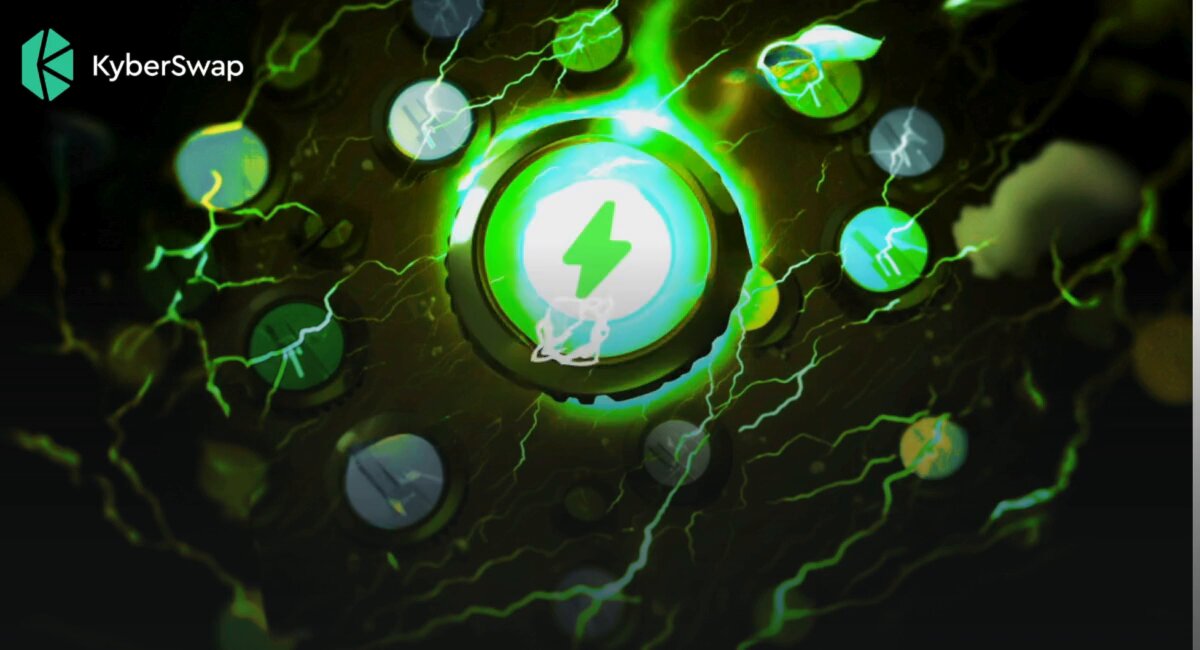Signum Newsletter 12
Weekly alpha for your weekend reads
This edition of the newsletter dives into how we think project founders can target the Korean markets more efficiently. See you guys next week at Token 2049, the entire team will be there. We'll also share some interesting articles, portfolio updates and market highlights.
Special thanks to YY, Melvin, Adna, Nikos, Keith and Ash for their help.

a) How L2s Can Enhance Collaboration and Maximize Positive Sum Games with L1
• L2 solutions offer great potential, but their success depends on effective L1 collaboration.
• By focusing on interoperability, decentralization, user experience, governance, and open-source, L2s can create a better blockchain ecosystem.
b) Crypto Needs Kamala To Win
• A Harris presidency might act as a catalyst for crypto innovation and reinforce the drive for decentralization and privacy.
• Despite differing views on potential outcomes, the author sees both Trump and Harris scenarios as having significant implications for the future of crypto.
c) Restaking Protocols Infra Risk Framework
• Restaking protocols offer new security and incentives but also introduce unique risks. Factors like trust root architecture, slashing conditions, collateral types, and ecosystem integration play a crucial role in determining the security and reliability of these protocols.
• A comprehensive risk assessment is essential for understanding the potential risks associated with restaking.
d) Crypto Data — Part 1: Understanding the Data Flow
• A detailed overview of the process involved in transforming raw blockchain data into meaningful metrics. It covers the essential steps from client nodes initiating data requests to the final aggregation of metrics.
a) Solv Protocol
• Solv Protocol utilizes SolvBTC to unlock the full potential of over $1 trillion in Bitcoin assets. By providing a fully transparent Proof-of-Reserve, incorporating diverse reserve assets, and enabling access to Bitcoin Liquid Staking Tokens, Solv offers a comprehensive gateway to BTCFi, paving the way for traditional funds to confidently enter the crypto world.
• SolvBTC TVL reaches $765m with over 370k unique users.
b) Kyber Network
• KyberZap is a new API that simplifies liquidity provisioning in DeFi. It addresses the inefficiencies of traditional methods by minimizing price impact, eliminating leftover tokens, and adapting to changing pool states.
• .KyberZap offers a seamless user experience and enhanced security features, making it a valuable tool for DeFi users.
c) Particle Network
• Universal Accounts are launching on Mainnet! This solution simplifies crypto usage by unifying fragmented chains, making it easier for users to manage assets and interact across different networks.
d) Sonic Labs
• Technological evolution occurs in stages, and blockchain is no exception. Just as the internet required advancements, blockchain needs technological breakthroughs to support more complex dapps
• Sonic aims to break through these barriers with its low latency, true finality, gas subsidies, and native account abstraction. These features enable the creation of dapps beyond finance, including those that leverage credit scoring, a crucial element in traditional finance
Our investment director, Ash spent a week in Korea and garnered some insights that will be useful for project founders. He shares his thoughts below.
Korea, with crypto exchanges that processed a staggering US$2 billion in trading volume, presents a unique opportunity for projects. Having had the chance to connect with local stakeholders at this year’s Korean Blockchain Week (KBW) 2024 conference, I’ve distilled key insights to help guide your approach.
Content breakdown:
• Korean ecosystem landscape
• Planning a marketing campaign
• Understanding Korean retails
• Misc.
- - - - - - - - -
1. Korean ecosystem landscape
This portion covers the local ecosystem including CEXs, media, research and consulting, investments, projects and KOLs. According to several sources, about 10-15% (6-9 million) Koreans use CEXes to trade.
a) CEXes
There are 3 main CEXes in Korea (Upbit, BitThumb and Coinone), with Upbit and BitThumb taking 95% of the market share.
An interesting fact is that all are linked to individual banks for off/on ramps:
• UpBit <> KBank
• BitThumb <> Nonghyup Bank
• Coinone <> KakaoBank
Within each CEX, the highest trading volume is with KRW and that is what most projects should strive to get the listing pair for their token.
I also realised local CEXes enjoy so much trading volume because of:
• Local gambling culture* and strong buying power of Korean retail
• Koreans do not like self custody, so they prefer to trade on CEX instead
• Koreans view crypto as a speculative asset class (similar to stocks) with hyped narratives rather than in the pure fundamentals (e.g. association with big names such as Ondo <> Blackrock, Doge <> Elon Musk)
*After speaking to some folks, I would say this is a dark side of Korea as current conditions (soaring real estate market, low wages, weak stock market and monopolistic nature of the economy) forces people to hyper-gamble their way out of poverty in hopes of making it.
b) Media
The language barrier in Korea often leads users to rely heavily on local publishing houses for the latest news and updates. In addition to Naver’s blog, prominent media outlets include Blockmedia, Coinness, Bloomingbit, Factblock and TokenPost.
For non-Korean projects, directly engaging with these media companies can be challenging and that's where the next stakeholder will be useful.
c) Research and Consulting
Korea boasts a thriving ecosystem of research and consulting firms, many of which serve as intermediaries between projects and users, as well as between international projects and Korean audiences. For a successful Korean go-to-market strategy, partnering with a reputable firm is essential. I've categorised them into two primary groups:
i. Advisory
• Xangle
• DeSpread
• Undefined Labs
• INF Crypto Lab
• Encoding Labs
• Whitewater Labs
• 071 Labs
ii. Research
• Four Pillars
• Tiger Research
Identifying the objective makes it easier for founders to choose a firm to use, for example:
• For connections to Korean institutions: Xangle
• Get connected with Korean builders + increase research exposure: Four Pillars
• To target degens/retails users: DeSpread
• To stay up to date with local regulations: Tiger Research
d) Investments
The capital market in Korea is not very huge, with only a few key players which can be segregated into 2 groups:
i. Venture Funds
• Hashed
• Nonce Classic
• Lecca Ventures
• Blocore
• ROK Captial
• Samsung NEXT
• Hyperithm
ii. Market Makers (MMs)
• Presto Labs
• Alphanonce
*Do note that because of regulations, MMs cannot open a corporate account in Korean CEXes
e) Projects
• DeFi: Mitosis, Keplr, Exponents, Fragmetic
• Ecosystems: Kaia, Initia, Story Protocol
• Gaming: DeLabs, WeMix, MapleStory, Gomble
• Validators: DSRV, A41, Cosmostation
- - - - - - - - -
2. Planning a marketing campaign
Many projects aspire to enter the Korean market, lured by the substantial trading volumes and purchasing power of Korean retail investors. However, this narrow-minded approach is disrespectful to Korean participants, who are not easily manipulated for exit liquidity.
Korean degens are cautious and much more educated, especially after the Terra Luna/Anchor events. Koreans value transparency in marketing and intentions. Projects with charismatic yet humble founders who inspire trust, similar to the impact of cults or religions in Korean culture, are likely to attract a significant following.
Before targeting the Korean market, develop a comprehensive marketing plan that:
• Has a clear KPI
• Consist of actionable items for users
• Builds a clear roadmap ahead (pre and post TGE plans)
A simple marketing campaign can go like this: define marketing objectives with clear actions for users → work with media houses and consulting firms for SEO optimisation + have Korean translated research reports → plan out a KOL campaign for amplification.
Most marketing strategies will not no longer suffice in the saturated market. Korean investors are increasingly weary of endless questing campaigns and token/node sales. To stand out, think creatively and offer genuine value, such as compelling incentives or opportunities for financial gain.
- - - - - - - - -
3. Understanding Korean retails
It is no secret that Koreans are trendsetters and avid followers of the latest hype, as evidenced by their vibrant fashion scene, obsession with luxury brands, and unwavering devotion to K-Pop. This means that projects must continually refresh their marketing materials and present innovative, captivating narratives to maintain the interest of retailers.
There are 3 types of users in Korea which can be classified into the following:
• Airdrop farmers: must have actionable steps
• Opportunistic cherry pickers/traders: follow narrative/hype
• Infra users (in it for the tech): very few of these since Koreans trust 3rd party solutions more
Using a one-size-fits-all approach will not work, and tailoring your marketing campaigns to your target audience is crucial. Building trust through transparency and open communication, while also utilising the Korean language, is key to success in the Korean market.
- - - - - - - - - - - -
4. Misc.
a) Big consumer apps in Korea
• Naver
• Coupang (e-comemrce)
• Kakao (KakaoTalk, Kakao Taxi)
• Samsung Pay (Apple pay doesn't work in Korea for obv reasons)
b) Korean builders primarily come from either SKY or KAIST
SKY is the unofficial grouping and acronym for the 3 most prestigious universities located in Korea: • Seoul University
• Korea University
• Yonsei University
While KAIST (Korea Advanced Institute of Science and Technology) is a national research university.
c) Other interesting things I learned
• Aptos and Sui are quite popular in Korea
• Up and coming ecosystems like Monad, Berachain and Movement Labs were actually on the ground (especially the founders) to connect with the local community, forging relationships and creating a sense of togetherness
• Many ecosystems already started hiring Head of Korea including the likes of Monad, Chromia
• Did not meet a single person from Upbit or BitThumb , listings on these exchanges is extremely hard and random
• Outside of the crypto industry, Telegram is actually shunned upon due to explicit deepfake content being shared in Telegram groups
- - - - - - - - -
TLDR: map out the local ecosystem and landscape → work with a local advisory firm → plan a localised marketing campaign → understand Korean retails → don’t take advantage of Korean trading volume just because it is high.
Disclaimer: this was written by a non-Korean, apologies for missing out anything or getting some things wrong!

See you guys at this year's Token 2049. To recap, Signum will be posting a slew of panels:
• What are the missing pieces for crypto mass adoption (Link: https://lu.ma/nijb29g1)
• Where is crypto heading to in the next 5 years (Link: https://lu.ma/v7jt3x1l)
• RWA, fact or fiction? (Link: https://lu.ma/yxe8h6n8)
If you are coming in from other countries, please visit this guide.









 17
17







